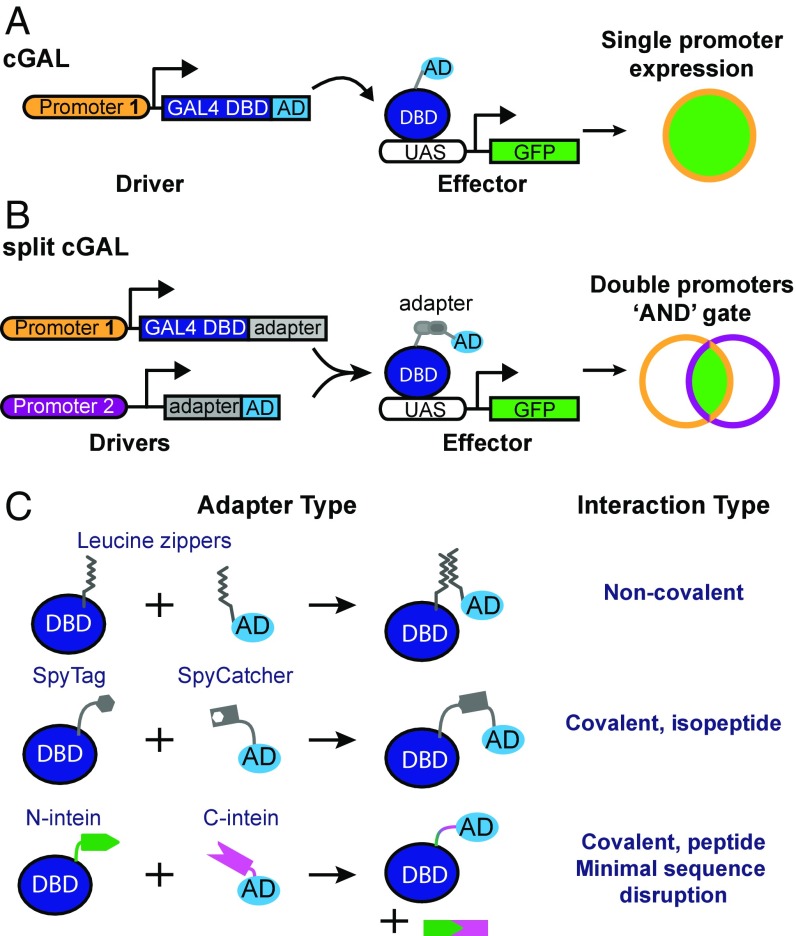Fig. 1.
Schematic of cGAL and split cGAL strategies. (A) The original cGAL bipartite system, in which a single promoter governs expression of the cGAL driver (2). The driver is composed of the DBD from S. kudriavzevii Gal4p, which recognizes UAS, and a transcriptional AD, which recruits transcriptional machinery. The cGAL driver then specifies expression of the effector gene (i.e., GFP), under the control of UAS, in cells where the promoter is active. (B) Using split strategies, two promoters can be used, providing an “AND” gate to achieve intersectional control of transgene expression. (C) Splitting the driver components requires a way to reconstitute the split components in cells expressing both. Leucine zippers allow for noncovalent reconstitution of the DBD and AD. The SpyTag/SpyCatcher domains reconstitute via covalent formation of an isopeptide bond. Split intein domains recognize one another and associate, after which they covalently ligate the flanking sequences and self-excise.

